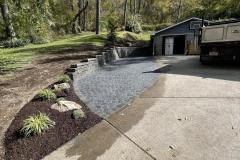Introduction
Maintaining a lush and vibrant lawn and shrubs requires more than just regular watering. It’s crucial to understand how to set up your sprinkler timer correctly and establish effective watering guidelines. In this guide, we’ll delve into the essential steps and tips to ensure your grass and shrubs receive the optimal amount of water for healthy growth.

Understanding Watering Needs
Before diving into the specifics of your sprinkler timer, it’s essential to grasp the watering needs of your lawn and shrubs. Factors like climate, soil type, plant species, and seasonal variations all play a role in determining how much water your plants require. Cool-season grasses, for instance, may need more frequent watering during hot summers compared to warm-season varieties.
Setting Up Your Sprinkler Timer
Accessing and programming your sprinkler timer can seem daunting at first, but it’s a straightforward process once you understand the basics. Begin by locating your timer’s control panel and familiarizing yourself with its functions. Set watering start times, duration, and frequency for each zone based on your lawn and shrub watering requirements.
Grass Watering Tips
Grass is a central element of any landscape, and proper watering is key to its health and appearance. Here are some tips for watering your grass effectively:
- Deep Watering: Water deeply and infrequently to encourage deep root growth. Aim for 1 to 1.5 inches of water per week, depending on weather conditions.
- Early Morning Watering: Water your grass early in the morning to minimize evaporation and fungal growth.
- Adjust for Seasonal Changes: Increase watering during hot and dry periods, and reduce frequency during cooler months.
Shrub Watering Guidelines
Shrubs have varying water needs based on their species, size, and location. Follow these guidelines for optimal shrub watering:
- Deep Root Watering: Provide deep, thorough watering to promote strong root systems. Watering to a depth of 12 to 18 inches is ideal.
- Mulching: Apply mulch around shrubs to retain moisture and reduce water evaporation from the soil.
- Monitor Soil Moisture: Check soil moisture levels regularly and adjust watering frequency based on plant needs and weather conditions.
Testing and Adjusting
After programming your sprinkler timer, run manual test cycles to ensure that each zone receives adequate water coverage. Monitor your lawn and shrubs for signs of overwatering or underwatering, such as wilting or yellowing leaves. Make adjustments to watering schedules as needed to maintain optimal plant health.
Expert Assistance from American Groundskeeping
While setting up your sprinkler timer and following watering guidelines are essential steps, sometimes expert guidance can make a significant difference. American Groundskeeping offers professional landscape installation and maintenance services tips, including efficient watering system design and personalized care for your lawn and shrubs. If you need a whole landscape makeover give us a call!
Conclusion
By mastering your sprinkler timer and adhering to effective watering guidelines, you can nurture a vibrant and thriving landscape. Remember to tailor your watering practices to suit the specific needs of your grass and shrubs, and don’t hesitate to seek professional assistance from American Groundskeeping for comprehensive landscape care.



















